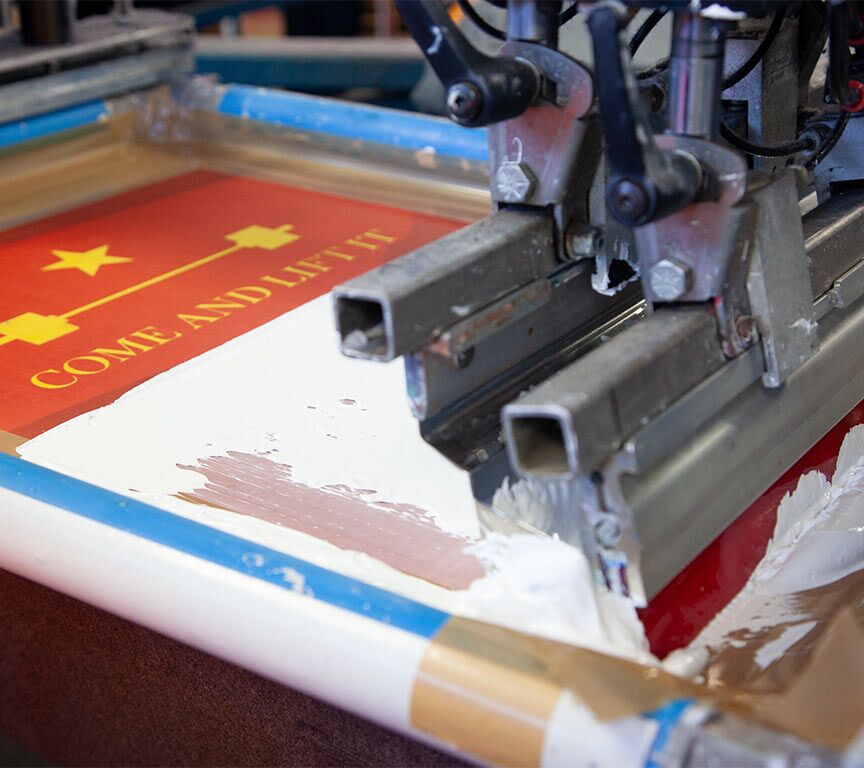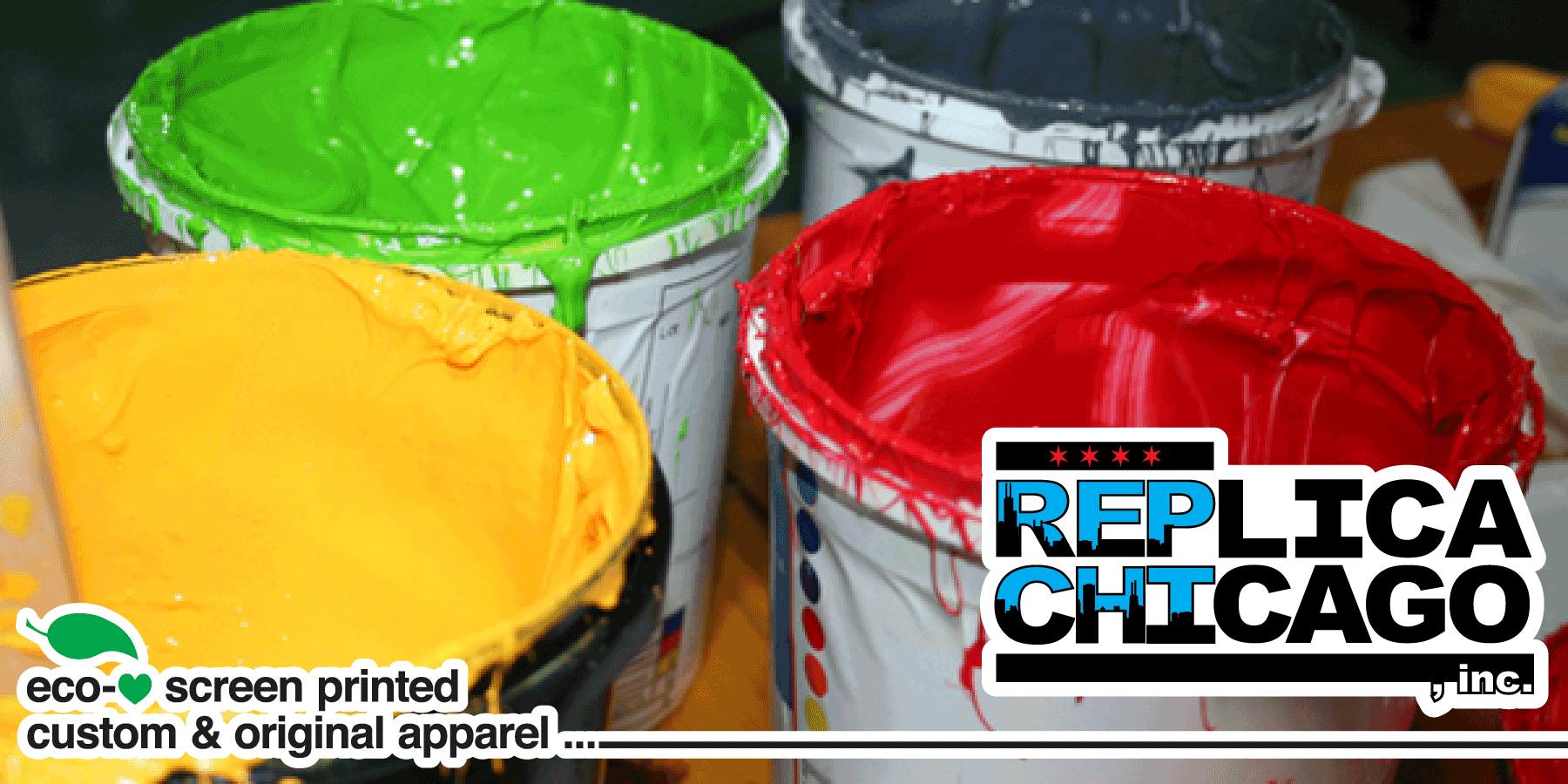Professional Screen Printing Kit for Custom Apparel
Professional Screen Printing Kit for Custom Apparel
Blog Article
Screen Printing Uncovered: Everything You Required to Learn About Tee Shirt and Garment Printing Strategies
If you have actually ever wondered how those vivid designs wind up on your favorite tees, you remain in the right area. Screen printing is a remarkable approach that incorporates art with method, supplying endless possibilities for imagination. Comprehending the basics, from tools to ink choices, can substantially affect your outcomes. All set to explore the crucial elements that make screen printing an art type? Let's reveal the details that can elevate your projects.
The Basics of Display Printing: Just How It Works
When you plunge right into screen printing, you'll uncover it's both an art and a scientific research. At its core, screen printing includes producing a stencil, or screen, that permits ink to go through just in certain locations (screen printing kit). You start by selecting your design and preparing your screen with a light-sensitive emulsion. As soon as you expose this solution to light, it solidifies, leaving your layout as an adverse room.
Setting the display over the textile, after that make use of a squeegee to press ink through the display onto the garment. Each action is important, and understanding them will certainly raise your screen printing abilities, changing basic garments right into distinct, meaningful pieces.
Kinds of Screen Printing Techniques
When you grasp the basics of display printing, it's time to discover the different strategies that can elevate your layouts. One prominent method is typical display printing, where ink is pressed through a stenciled screen. This technique is great for bold, vibrant colors. There's water-based ink printing, which offers a softer feel and is green, but it calls for a various method to healing.
If you're going for great details, think about discharge printing. This technique gets rid of color from the textile, leaving a soft, vintage appearance. One more choice is plastisol printing, known for its sturdiness and vivid colors, making it a favored for many brands. Experiment with halftone printing to produce slope results and intricate styles. Each method has its one-of-a-kind charm, so do not be reluctant to attempt them bent on discover what matches your style best!
Necessary Equipment for Display Printing
To achieve sensational results in screen printing, having the right equipment is basic. Initially, you'll require a sturdy display printing structure, which holds the mesh that moves your design onto the garment. Next off, purchase high-quality squeegees; these are essential for applying ink uniformly throughout the display. You'll likewise call for a good direct exposure system to create your displays, along with a washout booth for cleaning them after usage. A trustworthy heat source, like a conveyor dryer or warm press, is critical for treating your prints to assure longevity. Don't fail to remember a correct office, equipped with tables and storage for your materials. Ultimately, safety equipment, such as masks and gloves, will keep you risk-free from chemicals and inks. With the right devices, you'll be well on your means to creating professional-quality prints.
Choosing the Right Inks and Materials
When selecting inks and products for screen printing, you need to take into consideration the kind of ink that works ideal for your job. Believe regarding material compatibility to guarantee your layouts look last and fantastic long. Discover environmentally friendly ink choices to make your printing process extra sustainable.
Kinds Of Display Inks
Selecting the appropriate screen ink is crucial for accomplishing vivid, sturdy prints that meet your job's demands. There are several types of display inks to examine. Specialized inks, such as metal or glow-in-the-dark, can include one-of-a-kind effects to your styles.

Textile Compatibility Considerations
Recognizing fabric compatibility is essential for accomplishing premium screen prints, specifically because various materials respond distinctly to different inks. Constantly evaluate your inks on example textile to ensure they adhere correctly and keep shade integrity. Additionally, maintain in mind that fabric weight and texture can influence the last end result, so picking the best ink and product combo is essential for your job's success.
Eco-Friendly Ink Options
Environment-friendly inks are becoming a prominent choice for display printers that intend to reduce their environmental effect while preserving top quality. When choosing inks, think about water-based inks, which are much less dangerous and simpler to cleanse up compared to traditional solvents. These inks bond well with materials, supplying lively results without toxic chemicals. You could also discover eco-solvent inks that utilize fewer volatile organic substances (VOCs), making them a safer option for both your wellness and the earth.
In addition, seek inks made from eco-friendly sources, such as soy or vegetable-based alternatives. By picking the right inks and materials, you'll not only develop stunning designs but likewise contribute to a much more lasting printing procedure. Make the button, and your prints will certainly reflect your commitment to the environment!
Preparing Your Style for Display Printing

File Layout Requirements
To assure your style looks sharp and lively on fabric, you'll require to pay attention to file format demands for screen printing. Beginning with vector data like AI or EPS, as they can be scaled without shedding top quality. If you utilize raster pictures, opt for high-resolution data, such as TIFF or PNG, preferably at 300 DPI. Avoid utilizing JPEGs, as they can shed clarity when resized. Also, make certain your layout has a transparent history to stop undesirable white edges on your prints. Ultimately, keep shade modes in mind; CMYK is basic for display printing, so convert your RGB makes appropriately. By complying with these guidelines, you'll set your art work up for a successful print.
Color Separation Methods
Shade separation is a necessary action in preparing your style for display printing, and understanding it can greatly boost your print quality. You'll need to break your design right into specific shades, as each shade needs a different screen throughout printing. Beginning by recognizing all the colors in your style and produce layers each. You can use screen printing kit software application like Adobe Photoshop or Illustrator to separate and separate shades effectively. Be particular to save each layer as a different file, usually in a layout like TIFF or PSD. This precision not just ensures precise shade representation yet also streamlines the printing procedure. By taking note of color separation, you'll achieve professional and vibrant cause your screen-printed garments.
Resolution and Size
Achieving the most effective results in screen printing starts with guaranteeing your style has the appropriate resolution and size. Preferably, your art work needs to go to least 300 DPI (dots per inch) for sharp, clear prints. If you utilize reduced resolution, your end product might look less than professional and pixelated.
When it concerns dimension, take into consideration the measurements of your print location. Style your artwork to match the last print dimension, preferably creating it in the actual measurements you'll be printing. In this manner, you'll avoid any unanticipated scaling issues.
Constantly check your style in both vector and raster layouts. Vector graphics can be scaled without shedding high quality, making them ideal for screen printing. Preparing properly will guarantee your style looks remarkable on every garment!
Step-by-Step Display Printing Process
Screen printing is a dynamic process that permits you to produce vibrant layouts on various surface areas. To obtain started, you'll need a screen, solution, and your selected ink.
After cleaning out the unexposed solution, your display is prepared. Set it up on your printing surface area and align your garment under it. Pour ink onto the display and utilize a squeegee to push the ink through the stencil onto the fabric. Lift the display thoroughly and allow the print dry. Lastly, cure the ink making use of warm to ensure resilience. That's it! You have actually efficiently display printed your layout.
Tips for Effective Screen Printing Projects
While you're diving right into your screen printing tasks, keep in mind that preparation is key to success. Beginning by gathering all your products-- inks, screens, mops, and garments. A tidy workspace aids prevent undesirable errors, so clean up before you start.
Following, verify your art work is high-resolution and appropriately sized for your garment. Test your screen for correct exposure and clean it thoroughly to prevent spots. When mixing your inks, comply with the supplier's guidelines to attain the best uniformity.
Throughout printing, apply even pressure with your squeegee for consistent outcomes. Do not hurry; take your time to verify each print satisfies your standards. After printing, allow your garments completely dry completely before managing or packaging them.
Last but not least, constantly keep a sample of your benefit future recommendation. In this manner, you can examine your development and improve your techniques in time. Delighted printing!

Regularly Asked Concerns
How much time Does It Take to Establish a Display Printing Task?
Establishing up a display printing job generally takes about 30 minutes to an hour. You'll prepare the displays, mix inks, and adjust the press. The moment differs based on complexity and experience, so stay arranged!
Can I Publish on Different Material Types Utilizing the Very Same Strategy?
Yes, you can publish on different material types making use of the exact same technique, however you'll need to change your inks and settings. Some materials soak up ink in a different way, so exploring warranties the best outcomes for each and every product.
What Prevail Errors to Prevent in Screen Printing?
When display printing, avoid usual errors like making use of the wrong ink, neglecting correct direct exposure times, or skipping pre-press checks. Always check your arrangement and maintain clean displays to ensure quality results each time.
How Can I Effectively Clean and Preserve My Screen Printing Tools?
To appropriately clean and keep your screen printing devices, you should consistently clean displays with proper solvents, examine squeegees for wear, and assure all devices are kept dust-free and dry. Uniformity boosts and stops pricey repair services performance.
Is Screen Printing Ecologically Pleasant Compared to Various Other Approaches?
Screen printing can be more eco pleasant than various other techniques, especially if you make use of eco-conscious materials and water-based inks. By choosing lasting materials and techniques, you minimize waste and decrease your effect on the planet.
Screen Printing Uncovered: Every Little Thing You Need to Know Regarding Tee and Garment Printing Methods
At its core, screen printing includes creating a pattern, or screen, that allows ink to pass through just in certain areas. Position the display over the fabric, then utilize a squeegee to press ink through the display onto the garment. One popular method is conventional display printing, where ink is pushed through a stenciled display.When picking inks and materials for display printing, you require to take into account the kind of ink that works best for your task.
Report this page